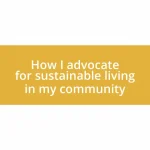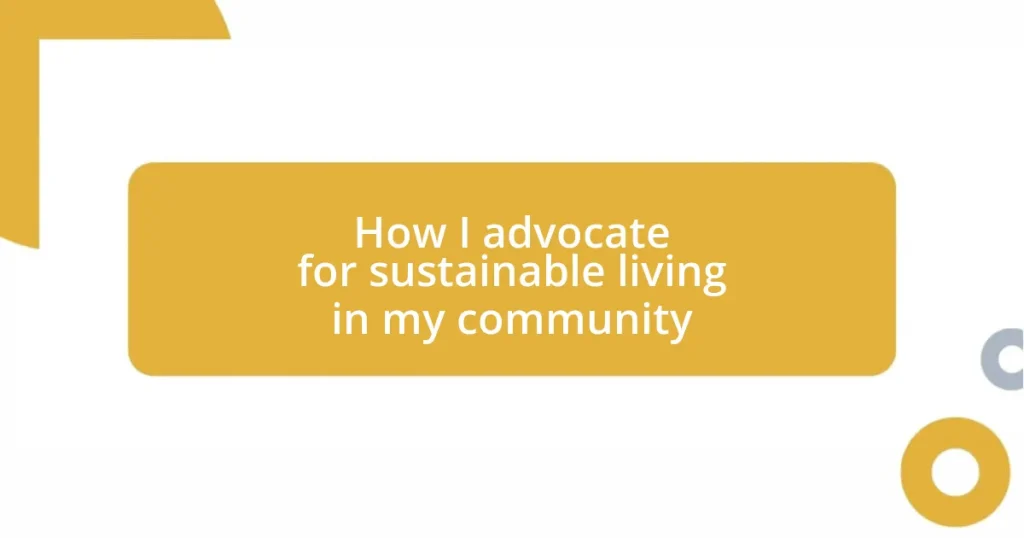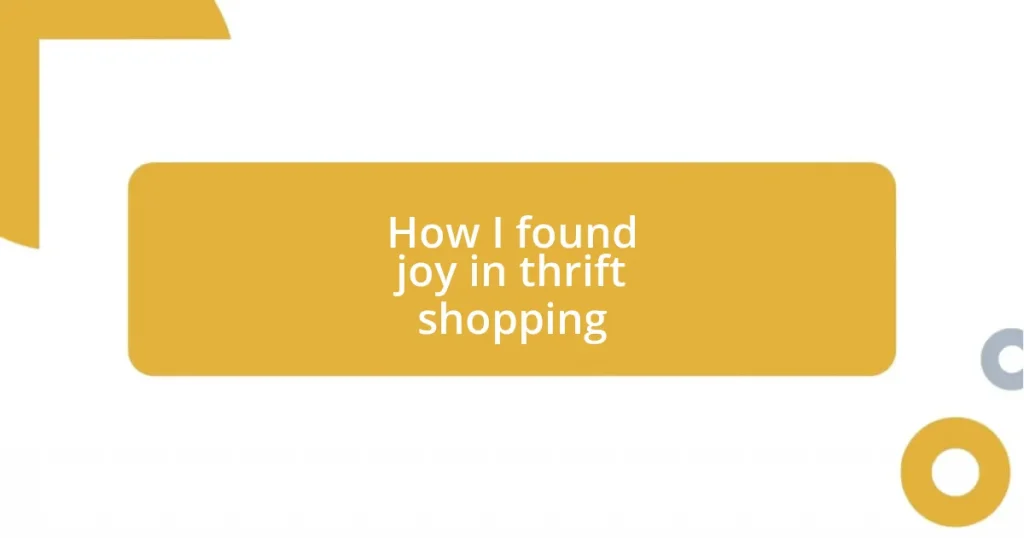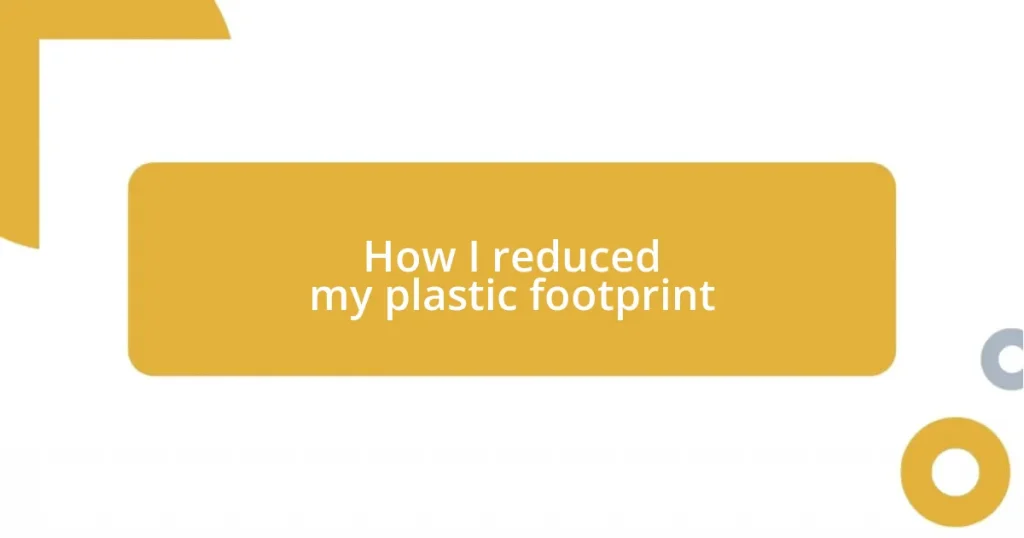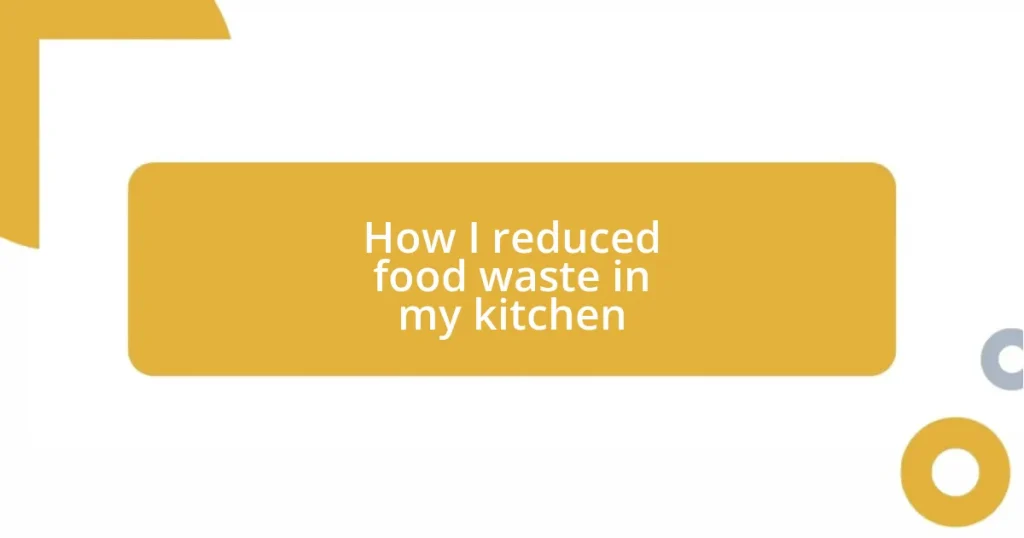Key takeaways:
- Sustainable living involves collective small changes, such as reducing waste and conserving energy, which can lead to significant environmental impact.
- Engaging with the community to understand specific sustainability needs is crucial for effective advocacy and initiative development.
- Building partnerships with local organizations enhances sustainability efforts, fostering collaboration and leveraging diverse insights.
- Measuring impact through community engagement initiatives, like composting programs, and celebrating successes motivates continued participation and highlights progress.
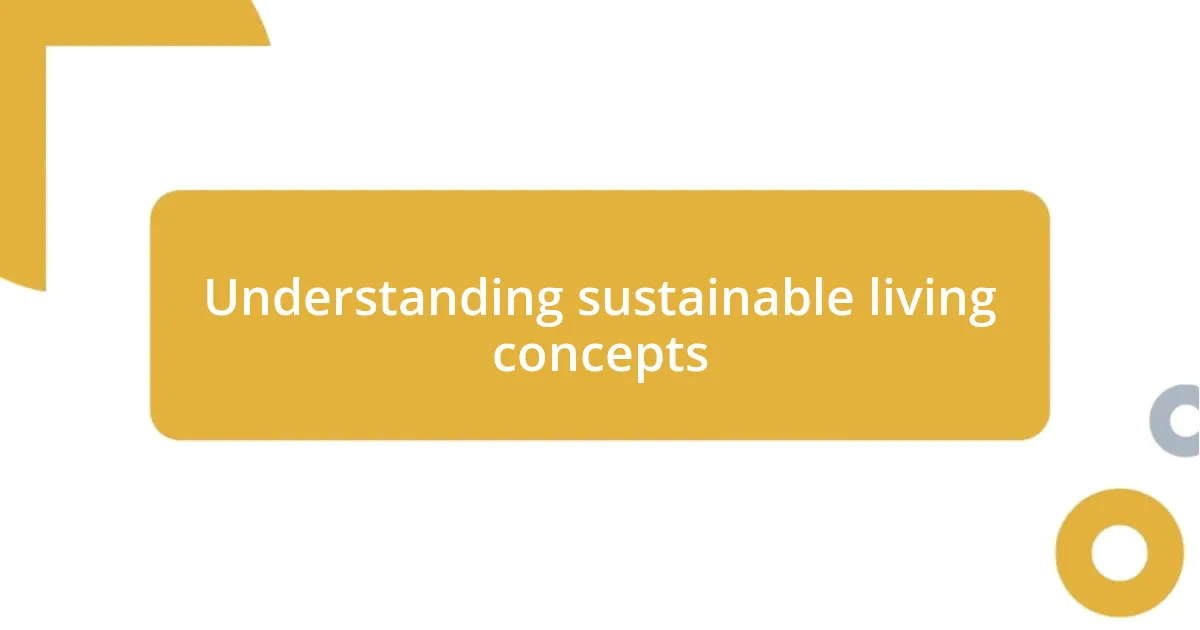
Understanding sustainable living concepts
Sustainable living is all about making choices that protect our planet for future generations. I remember when I first learned about the concept, sitting in a community workshop, and the facilitator asked, “What would happen if everyone made small changes in their daily lives?” It struck me, realizing how collective effort can lead to significant change.
One of the key elements of sustainable living is reducing waste. I often find myself reflecting on my own habits, like when I decided to switch to reusable bags. Initially, it felt inconvenient, but now, it brings me a sense of pride to know I’m contributing to a cleaner environment. Isn’t it empowering to think that our individual actions can ripple out to create a broader impact?
Another important aspect is energy conservation. I vividly recall the first time I installed solar panels on my roof. It was a learning curve, but the satisfaction of harnessing the sun’s energy was worth it. Have you considered how energy-efficient choices can transform not just your electricity bill, but also your carbon footprint? It’s these little decisions, made consistently, that truly pave the way for a more sustainable lifestyle.
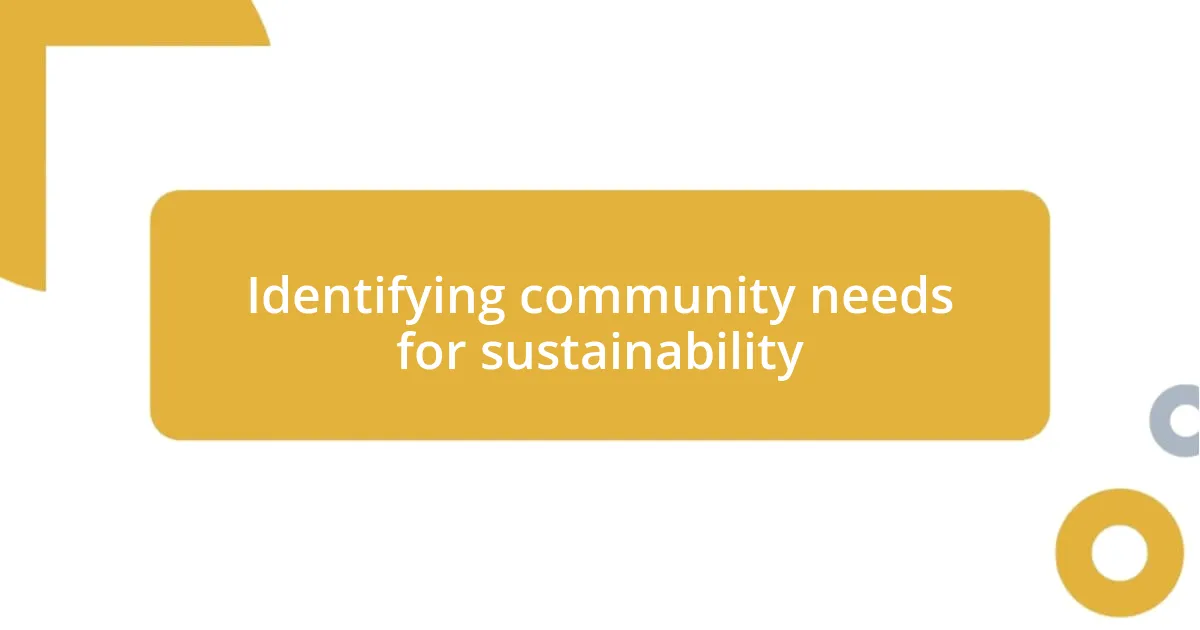
Identifying community needs for sustainability
To effectively advocate for sustainability in my community, I’ve learned that identifying the unique needs of the area is essential. I recall the day I organized a community meeting focused on sustainability, where neighbors openly shared their concerns about local air quality. It struck me how important it is to listen and understand what community members prioritize—be it clean air, efficient public transport, or access to green spaces.
Here are some ways to identify community needs for sustainability:
- Conduct surveys or hold discussions to gather feedback on environmental concerns.
- Analyze local data on waste management and energy use to pinpoint improvement areas.
- Partner with local organizations to understand the community’s existing sustainability initiatives.
- Observe urban development plans and identify opportunities for integrating sustainable practices.
- Engage with schools to educate young people about sustainability and gain their perspectives.
By delving into these aspects, I believe we can tailor our sustainability initiatives to truly reflect the community’s desires and needs, fostering a collaborative approach to environmental stewardship.
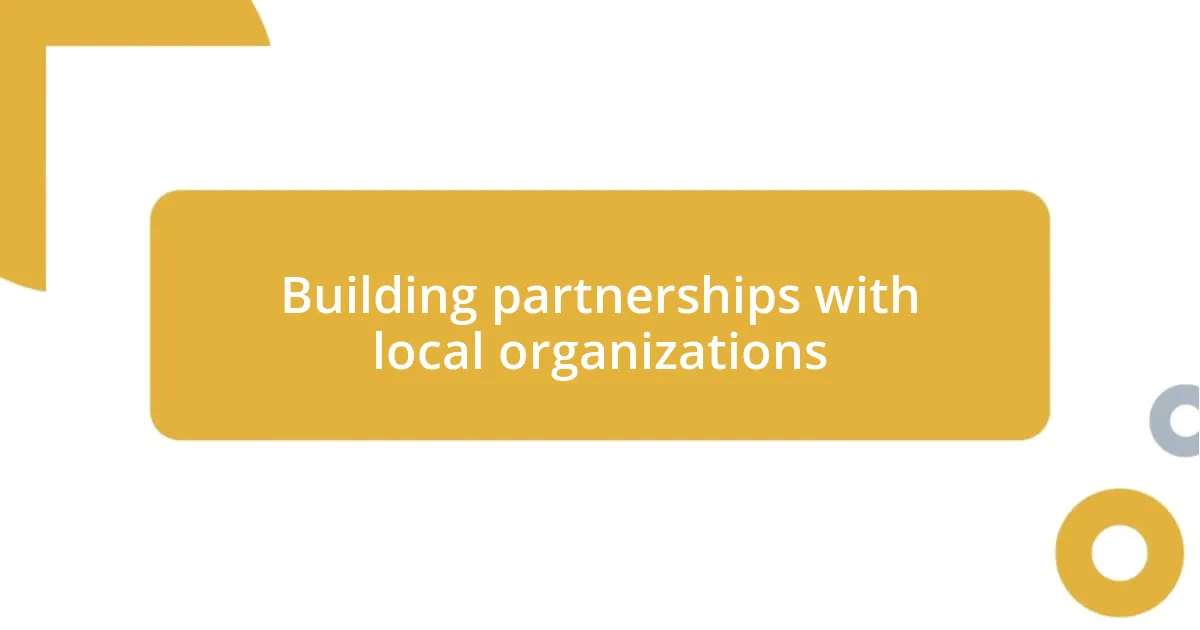
Building partnerships with local organizations
Building partnerships with local organizations has played a pivotal role in my sustainability efforts. I remember the day I reached out to a local community garden group. Their passion for urban agriculture was contagious, and it opened my eyes to the possibilities of collaboration. By working together, we organized workshops that not only taught residents how to grow their own food but also emphasized the importance of consuming locally. Have you ever been part of a project where everyone’s expertise created something greater than the sum of its parts? That’s how I feel about these partnerships.
Moreover, I realized that aligning with local organizations amplifies our collective voice. During a local sustainability fair, I saw firsthand how partnering with various groups brought diverse perspectives to the table. Each organization shared its unique insights on reducing waste, conserving energy, and promoting eco-friendly practices. This melting pot of ideas inspired a community-wide campaign to reduce plastic consumption. Engaging in such efforts shows that collaboration isn’t just beneficial; it’s essential for driving meaningful change.
Integrating the resources and networks of local organizations truly enhances the impact of our initiatives. I recall when I collaborated with a nearby school, organizing a recycling competition among students. Their enthusiasm was infectious, and the students spearheaded awareness campaigns that influenced their families. It reminded me how impactful it can be when we leverage our community’s strengths. Together, we foster a supportive environment that nurtures sustainable living.
| Local Organizations | Benefits of Partnership |
|---|---|
| Community Gardens | Promote local food production and educate about sustainability |
| Schools | Engage younger generations in sustainability practices |
| Environmental NGOs | Increase awareness and resources for conservation efforts |
| Local Businesses | Support sustainable practices in the local economy |
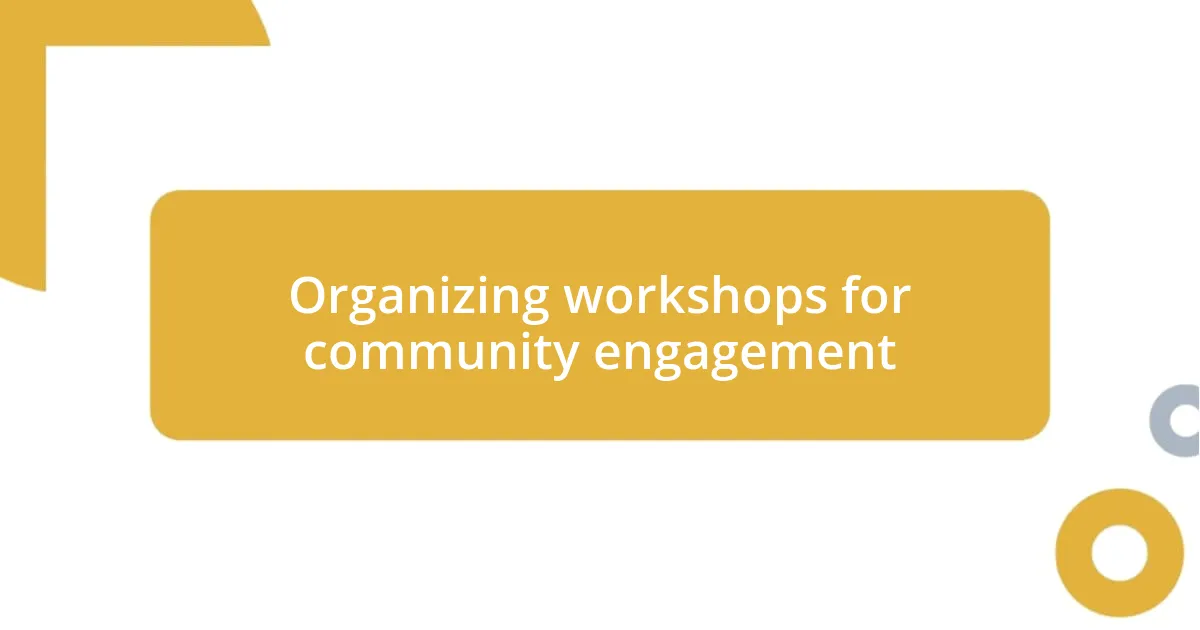
Organizing workshops for community engagement
Organizing workshops for community engagement has been a transformative experience in my sustainability journey. During one workshop, I encouraged participants to share their knowledge about upcycling—turning trash into treasure. Seeing the excitement on their faces as they crafted new items from old materials really highlighted how creativity can spark deeper interest in sustainability within the community. Have you ever noticed how hands-on activities leave a lasting impression? I find that practical involvement brings abstract concepts to life.
One memorable event was a workshop on composting that I facilitated in our local park. As we mixed kitchen scraps with yard waste, I could see the shift in attitudes around waste management. Suddenly, composting became more than just a chore; it morphed into a fun and meaningful activity that connected us to the earth. The laughter and camaraderie we experienced while working together reminded me of the bonds formed when we pursue common goals. It’s moments like these that can ignite a passion for sustainable living.
Additionally, I’ve discovered that involving local experts enhances the learning experience. For instance, when a local farmer shared their knowledge on crop rotation, it not only enriched our understanding of sustainable agriculture but also built trust within our community. Witnessing participants ask questions and become curious about sustainable practices motivated me to keep organizing these workshops. Isn’t it gratifying to know that our efforts can inspire change and develop a community that actively supports sustainability? It’s a reminder that together, we can cultivate a more conscious way of living.
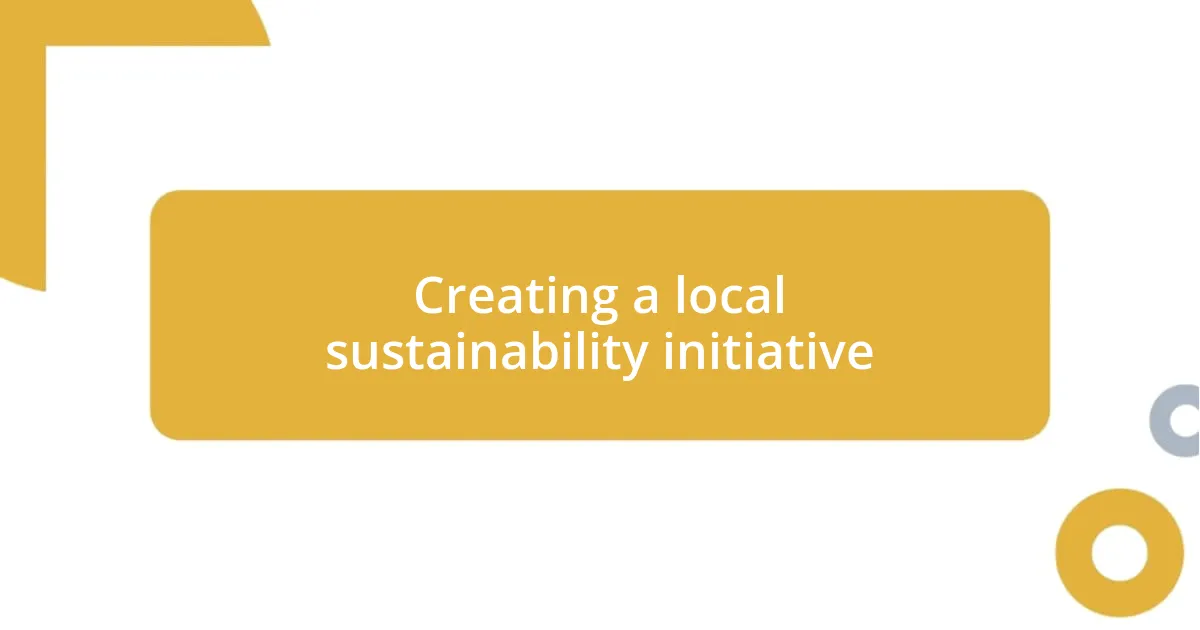
Creating a local sustainability initiative
Creating a local sustainability initiative requires passion and commitment, but it can be immensely rewarding. I vividly recall the initial meeting we held in my neighborhood, where we brainstormed ideas under the shade of a large oak tree. The excitement in the air was palpable as we discussed everything from beach cleanups to a neighborhood composting program. That day, I realized that the seeds of a sustainable initiative often take root in casual conversations. Have you ever found inspiration in an unexpected place?
To effectively bring our vision to life, we chose to focus on a few key projects that could instill a sense of ownership among community members. One such project was a “Sustainable Saturdays” program, where residents pledged to incorporate at least one eco-friendly change each week. Whether it was biking to work instead of driving or trying out a new vegetarian recipe, the accountability was powerful. I enjoyed collecting stories from neighbors who took part, as their enthusiasm amazed me. Seeing our shared goals translating into personal victories brought us closer together and heightened our community spirit.
The importance of communication cannot be overstated. I remember setting up a community bulletin board to share updates, tips, and encouragement. Each time someone posted their success stories or upcoming events, it felt like fueling a growing fire of inspiration. It reminded me of how crucial it is to celebrate small wins along the way. How do you think recognizing progress can motivate others to join us? From my experience, even the smallest efforts can spark a wave of change, and that’s exactly what I encourage my community to embrace.
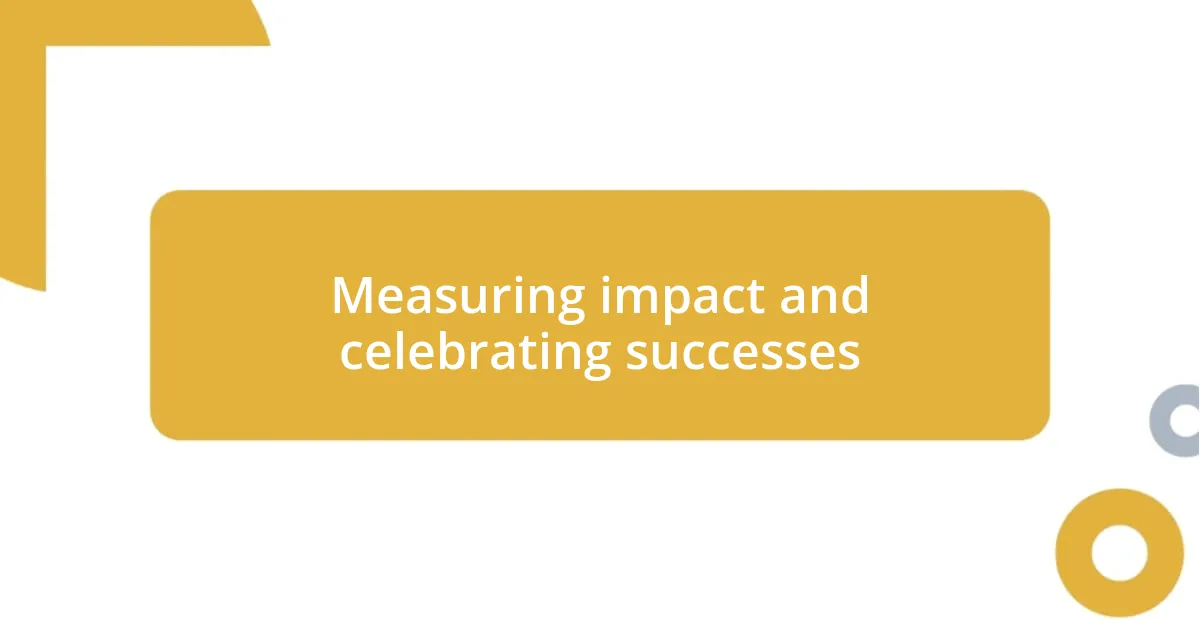
Measuring impact and celebrating successes
Measuring the impact of our collective efforts toward sustainability has become an exciting part of my advocacy. For instance, after implementing our neighborhood composting program, we conducted a survey to gauge residents’ engagement levels. The enthusiasm in the survey results was astounding—over 70% of respondents shared they’ve cut down their waste significantly! Isn’t it empowering to see tangible evidence of positive change?
I also love organizing community gatherings to celebrate our milestones. One memorable occasion was when we held a “Green Gala” to showcase contributions from each participant. It was simply incredible to hear stories of how small changes, like using reusable bags or starting a vegetable garden, had transformed lives. I’ll never forget the beaming faces of neighbors as they shared their successes with one another. Can you imagine how motivating it is to see your efforts celebrated by the whole community? It reminded me that each step we take, no matter how small, is worth acknowledging.
More than just numbers or events, understanding the emotional impact of our initiatives is crucial. For me, witnessing someone shift their mindset around sustainability feels like a personal victory. The moment a neighbor told me they now see their yard as a habitat for pollinators opened my eyes to the far-reaching effects of our work. Isn’t it fascinating how change can ripple through our lives? Each story, each transformation becomes part of a larger narrative of environmental stewardship that we can always cherish and build upon.






